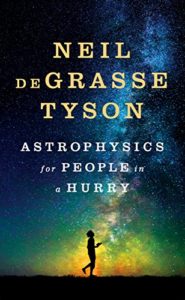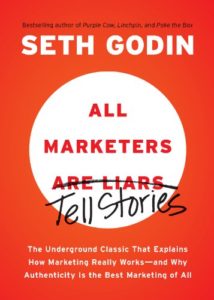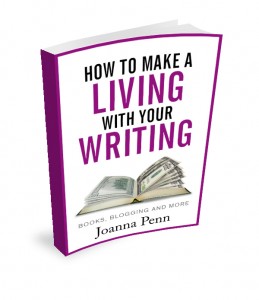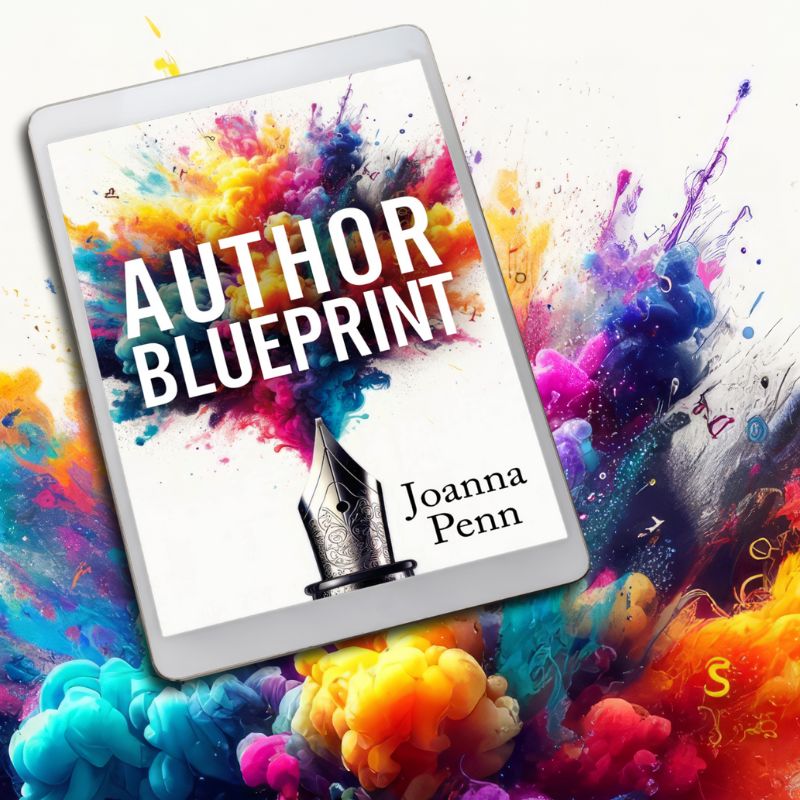You don't have to decide on your book title before you've written it.
 You can use a working title for the project.
You can use a working title for the project.
For example, I've started writing a book on creating from the shadow side and using our inner darkness to bring depth to our writing. But at the moment, I don't know what the final title will be, so I'm just calling it The Shadow Book.
That's fine until I understand exactly what I'm writing, and I'll give it a title later.
 This is an excerpt from How to Write Non-Fiction: Turn Your Knowledge into Words by Joanna Penn. Available in ebook, print, audiobook and workbook formats.
This is an excerpt from How to Write Non-Fiction: Turn Your Knowledge into Words by Joanna Penn. Available in ebook, print, audiobook and workbook formats.
Of course, if you can narrow it down early on, it will make the whole process easier, so here are some things to consider as you work out your title.
Consider Search-Engine Optimization and keywords
Amazon is a search engine for people who want to buy something. They already have their credit card details loaded, they know they want to buy a book. Will it be yours?
Switch your brain to reader mode. You’re not the author anymore. You're a reader in the niche, and you're looking for a book. What would you type into the search bar?
The words you type are keywords or keyword phrases and Amazon will auto-populate the search bar dropdown with the most common keywords. For example, if you go to Amazon.com and start typing in ‘how to be a t,' it will auto-populate (at the time of writing) with:
- How to be a travel writer
- How to be a tudor
- How to be a teacher
- How to be a tour guide
- How to be a translator
These are already interesting topics and book titles in themselves and you can get a lot of ideas by doing this kind of research.

Check out www.amazon.com/charts (20 bestselling and most read books for the week) for other books like this. For example, The Instant Pot Electric Pressure Cooker Cookbook: Easy Recipes for Fast and Healthy Meals. This is selling a LOT of copies. Clearly, Instapots have gone crazy and this is the bestselling cookbook in the niche.
There is no clever title. Not even an exciting book cover. The book does what it says on the tin and that's what readers want.
You can research keywords by doing the manual dropdown search, or you can use tools like KDP Rocket that do this work for you.
Use the principles of copywriting
Non-fiction book titles often use principles of copywriting. They focus on benefits and encourage the reader to take action. For good examples, look at magazine headlines: How to do X, Stop doing Y, Overcome Z, Secrets of A.
Classic benefit driven titles include How to Win Friends and Influence People by Dale Carnegie, and What to Expect When You're Expecting by Heidi Murkoff, where the reader can clearly understand what they are getting in the title.
You can even take this further and include time-specific benefits. For example, The Four Hour Work Week: Escape the 9-5, Live Anywhere and Join the New Rich by Timothy Ferriss, or Lean In 15: The Shift Plan. 15 Minute Meals and Workouts to Keep You Lean and Healthy by Joe Wicks.
Some titles grab attention with an element of surprise or shock. For example, The Subtle Art of Not Giving a F*ck by Mark Manson, Thug Kitchen: Eat like you give a F*ck, or You Are a Badass: How to Stop Doubting Your Greatness and Start Living an Awesome Life by Jen Sincero.

Make it clear what the book is about
For example, Astrophysics for People in a Hurry by Neil deGrassse Tyson. This is a great title. A book on astrophysics might not have a huge audience, but by making it clear that it's a short round-up, a way to grasp the topic without having to know everything, it appeals to people who love pop-science. It’s in the same vein as blockbusters like A Brief History of Time by Stephen Hawking, or Sapiens: A Brief History of Humankind by Yuval Noah Harari.
Don't be clever – unless you use an obvious sub-title
Many authors like the idea of using a personal word or a catchy phrase that has meaning for them, but could be misunderstood by readers. One way to mitigate this is to use a clear, targeted sub-title.
For example, Irresistible by Adam Alter. This could be a dessert cookbook, a romance novel, or something on how to attract a partner, but with the sub-title it becomes clear. The Rise of Addictive Technology and the Business of Keeping Us Hooked. Interestingly, they changed the sub-title for the Kindle edition to Why we Can't Stop Checking, Scrolling, Clicking and Watching. Clearly, the branding of the hardcover didn't do so well.

Seth Godin, marketing guru and non-fiction bestselling author, had to re-title one of his books because there was so much misunderstanding.
The original title was All Marketers Are Liars. The sub-title made it clearer: The Power of Telling Authentic Stories in a Low-Trust World. Seth eventually changed the title to All Marketers Tell Stories, although the cover still has the word Liars crossed out.
Attract your target market
When readers are browsing in a genre, your title should make them think, “Yes, I must read that” and click Buy Now immediately. They must be able to see themselves in the book.
Consider Word by Word: The Secret Life of Dictionaries by Kory Stamper. The target market is people who love words, but the title is also a callback to Bird by Bird by Anne Lamott, a huge bestseller in the writing community. I was immediately attracted to the book, and although it's a clever title with a play on words, it also has a clear sub-title for those who might not get the reference.
I also recently discovered High Performance Habits: How Extraordinary People Become That Way by Brendon Burchard. It's clearly aimed at a specific target audience of people who want to become high achievers, or get to the next level. I bought it pretty quickly in both hardback and audiobook formats. A double win!
Testing your book title

Tim's original title was Drug Dealing for Fun and Profit. His first business was in health supplements so it was a ‘clever' title with an element of shock which fits some of the copywriting principles.
But during his testing phase, he found that The 4-Hour Work Week got a better result and he also split-tested covers. The book has been out 10 years and continues to hit the bestseller lists and change lives. It’s a modern classic, but possibly would not have been if he had kept the original title.
Consider what people want, not what you think they need
When I left my day job to become a full-time author-entrepreneur, I realized pretty quickly that the skills of running a business were quite different to the craft of writing books. A successful author needs both.
So as I learned how to run my own business, I also wrote a book to help others on the same journey, Business for Authors: How to be an Author Entrepreneur. It continues to sell a small number every month as it contains everything an author needs, including detail on accounting and tax, topics that aren't sexy but critical for business.

That became How to Make a Living with your Writing, which is my bestselling non-fiction book in every format, and was included in a list of the Best Business Books in 2015 by INC magazine.
In another example, Tony Robbins originally published Money: Master the Game, a doorstop book packed with interviews and tips and basically way too much information for the average person.
Clearly, it didn't hit the market he wanted it to, as he later published Unshakeable: Your Financial Freedom Playbook, a cut-down version in a much more easily digestible format that I recommend to anyone interested in investing.
Changing your book title after publication
If you already have your book out and now want to change the title, don’t worry, it can be done!
If you have control of your book – either you self-published or got the rights back from your publisher – you can re-publish the book with a new title and a new cover. Just upload a new version of the book, over-writing the previous ebook edition so it retains reviews, but you will need a new ISBN for print editions.
 I changed the title of my first book from How to Enjoy Your Job or Find a New One to Career Change for keyword search reasons. There were 10 times as many searches for ‘career change' than for ‘how to enjoy your job,' so my sales went up after the change purely through organic search. If you search for ‘career change’ now on Amazon, my book should still be on page one.
I changed the title of my first book from How to Enjoy Your Job or Find a New One to Career Change for keyword search reasons. There were 10 times as many searches for ‘career change' than for ‘how to enjoy your job,' so my sales went up after the change purely through organic search. If you search for ‘career change’ now on Amazon, my book should still be on page one.
Hopefully, this has given you some ideas for shaping your book title, or perhaps coming up with a list of them that you can test with your target market.
This is an excerpt from How to Write Non-Fiction: Turn Your Knowledge into Words by Joanna Penn. Available in ebook, print, audiobook and workbook formats.
